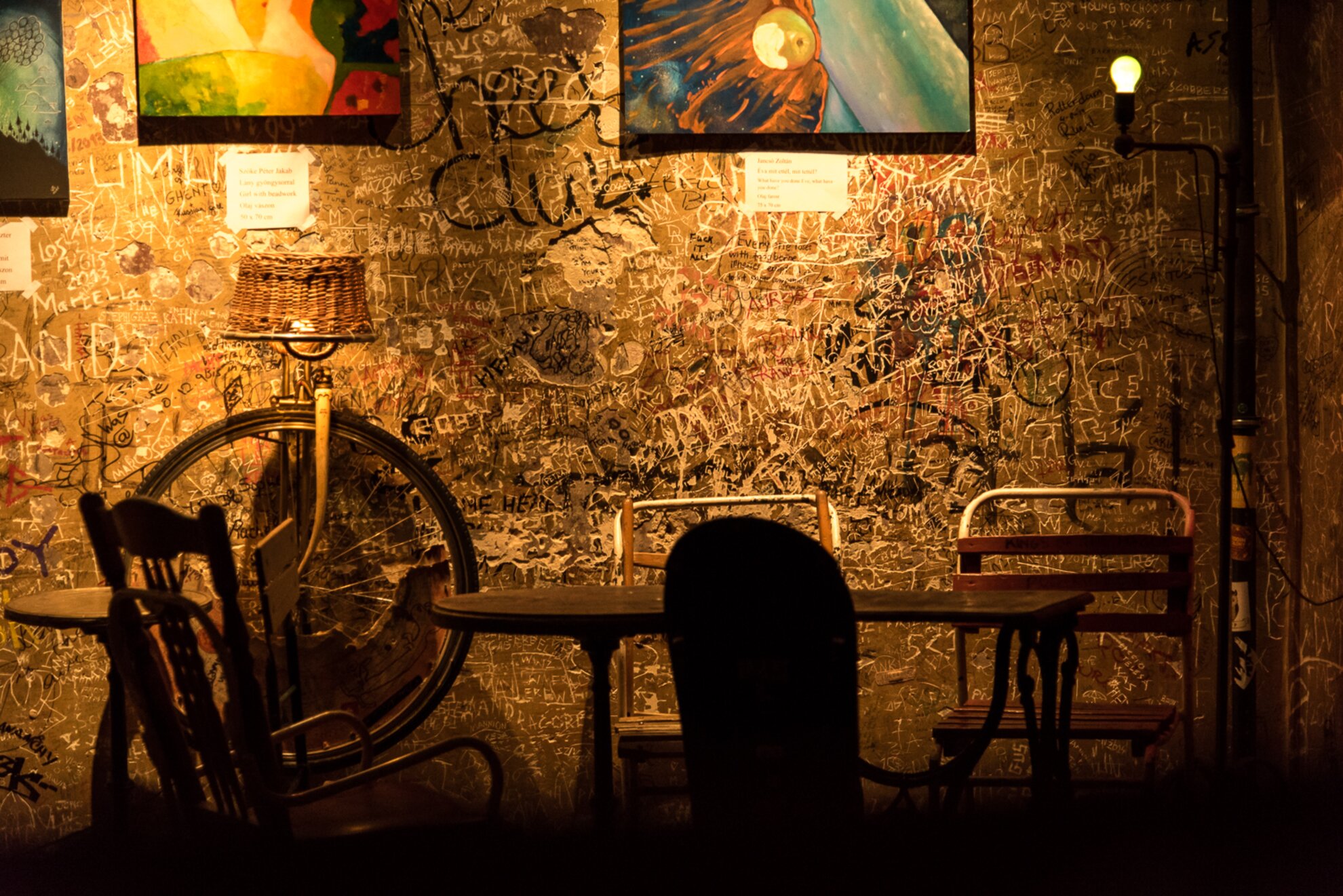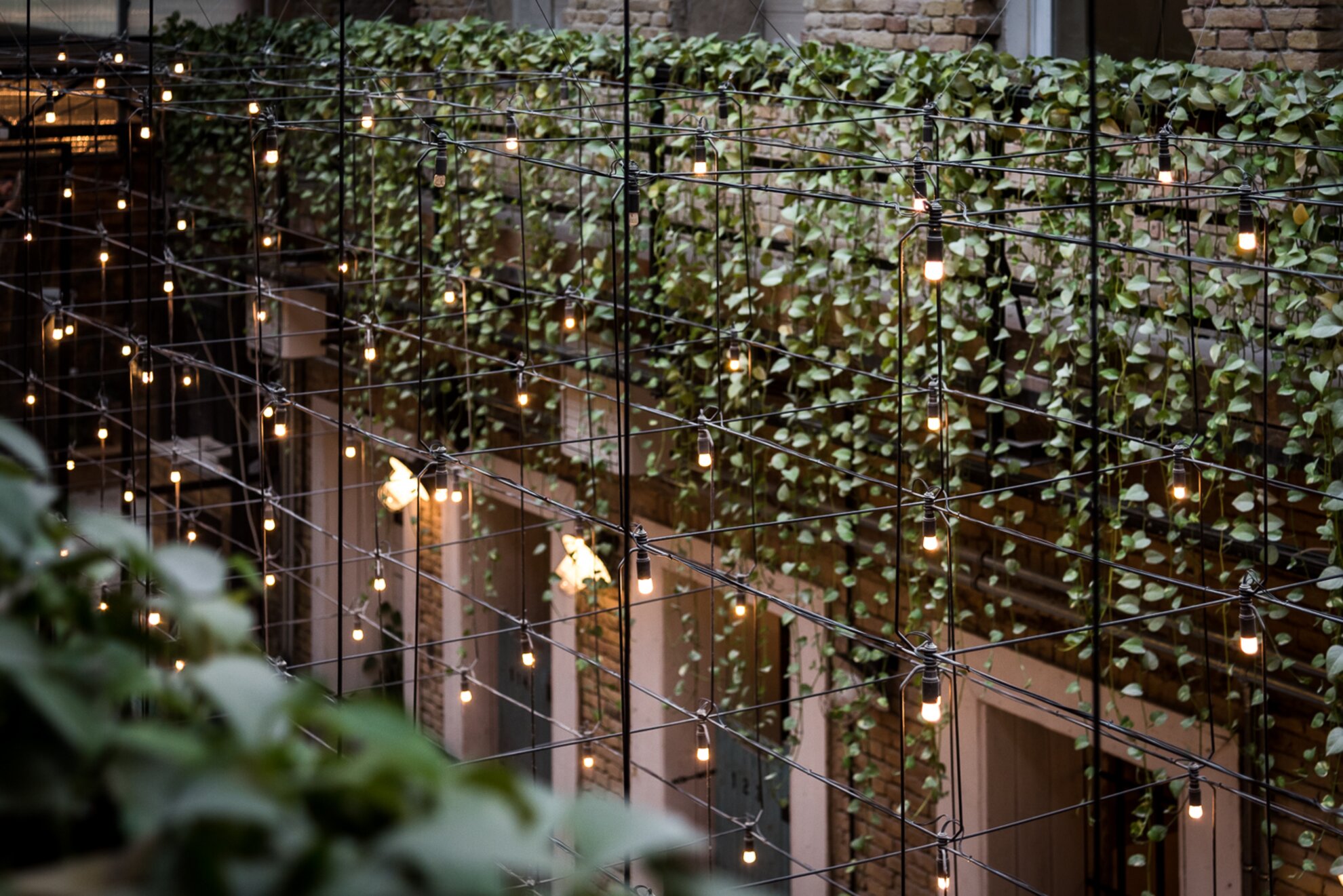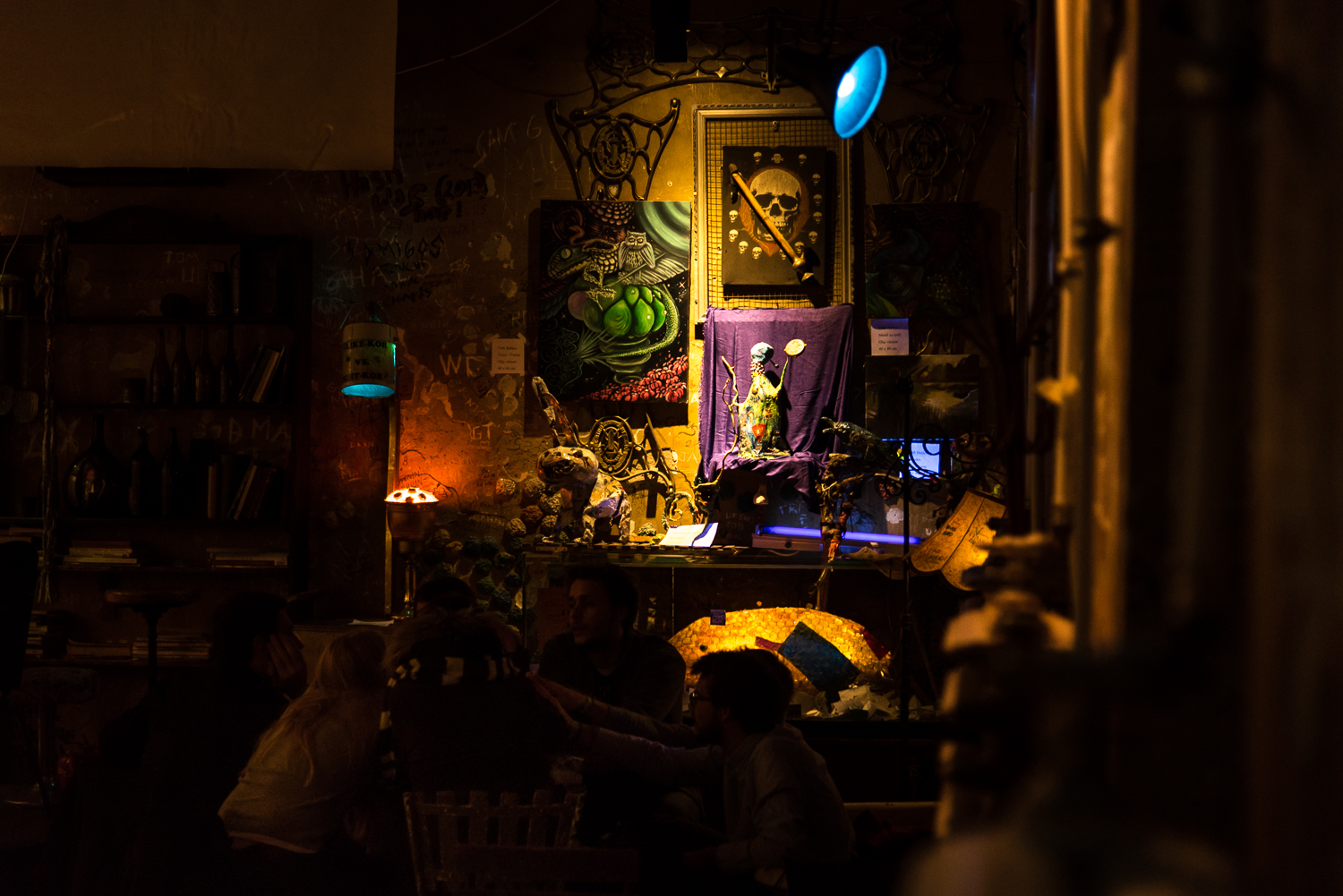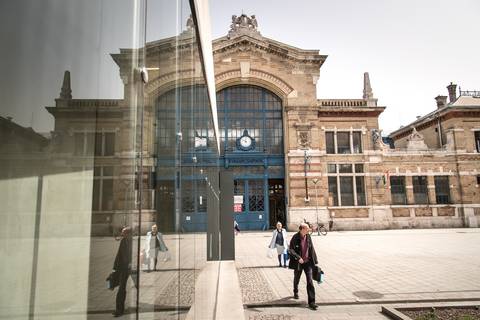Amid crumbling bricks, surreal art, and rickety furniture, countless locals and international visitors continually flock to Budapest’s world-famous “ruin bars” to soak in the unique atmosphere of this seemingly underground nightlife institution… but this city keeps changing considerably since the first ruin bars popped up over a decade ago, and now these decrepit destinations are big business, while the conditions that created them are long gone. What is the future of this iconic institution of Budapest nightlife?
About 15 years ago, a unique set of circumstances came together in Budapest to create a novel form of nightlife establishment: the “ruin bar”. At the time, this city had plenty of abandoned buildings that could be rented for peanuts, and plenty of offbeat local residents desperately seeking genuinely cool places to hang out together over cheap drinks – so when some enterprising Magyar entrepreneurs first filled some of these ramshackle properties with unwanted lomtalanítás tables and chairs to welcome anyone, these low-budget lounges became a sensation almost immediately.

Back in those halcyon early days of the 21st century, when most world travelers still considered Budapest as an obscure outpost of Eastern Europe more notable for communist-era artifacts than cutting-edge culture, the emerging ruin bars served as workshops for Magyars to refine their innovatively expressive spirits that now define this city. Almost anyone could contribute to the “interior design” of a ruin pub with sculptures made of found objects, or paintings cherished for their aesthetic or ironic quality, or graffiti scratched directly into the slowly collapsing walls. This hodgepodge of creative décor provided ideal settings for up-and-coming musicians to test their sounds among the laid-back clientele, while artists and writers could hang out there for hours while nursing a single beer – much the way Budapest’s coffeehouses functioned as incubators for penniless visionaries during the belle-époque era.

In short, ruin bars soon became homegrown community centers that brought together Budapest’s most innovative minds, and from these humble beginnings countless avant-garde movements were born, many of which now dominate Hungary’s creative scene. What’s more, people began to appreciate the iconoclastic spirit of ruin pubs – the most famous of them all, Szimpla Kert, was established at its current location in 2004, and as its popularity grew over the years that followed, its grungy stretch of Kazinczy Street attracted ever-more eateries and other drinking destinations to welcome the increasing crowds heading that way. Soon quite a few other ruin pubs opened in the surrounding neighborhood, like Instant, Fogas Ház, and Ellátó Kert – all of which, like Szimpla Kert, still survive with much of the same bohemian spirit that gave them such appeal during their early days.

However, as time went by and these places rightfully earned rave reviews in Budapest guidebooks (and the crowds of tourists that follow them), a gentrification process began that continues to this day – ruin bars were no longer established as grittily organic hubs of spontaneous creativity, but as carefully designed drinking destinations adorned by professional decorators and providing increasingly upscale drinks and food, such as Doboz, Anker’t, and Mazel Tov. These places are still fun destinations for nights out in Budapest, but their look and feel is considerably more polished when contrasted with the crumbling clubs of the first wave of ruin bars, and the increased sophistication of these places is reflected in increased prices.

Meanwhile, the ruin pubs of Budapest became one of the prime selling points of the city’s tourism industry, and as the city’s international esteem as a dynamic trendsetting metropolis continually grows, rental costs are growing along with it. Nowadays, it would be almost impossible to find an abandoned building anywhere in the city center that could be leased for a pittance to be converted into a derelict nightlife destination founded by a few friends and some throwaway furniture… and yet Budapest’s ruin pubs continue to be a massive draw worldwide, with these “bohemian” bars being a major reason behind this city’s recently official designation as a global hipster headquarters.

In many ways, this subtle dichotomy is representative of the identity crisis that Budapest is currently experiencing – along with the city’s dependence on ruin pubs and free-spirited events like the Sziget Festival as some of its main attractions, local tourism officials are quick to point out the multiple Michelin-starred restaurants that are blooming here nowadays (whereas a decade ago there were none) and deluxe boutique hotels. Hopefully these contrasting destinations can coexist in harmony, and Budapest will continue to attract grungy backpackers and luxury travelers alike, while still providing experimental locals with a welcoming environment to create future cultural innovations… but under the current circumstances, we are skeptical that there will ever again be another new downtown ruin bar that can embody the same nonconformist spirit that these dilapidated drinking destinations originally nurtured, and which remains a driving force behind the city’s success today – and this is a clear sign of Budapest evolving in one way or another.




